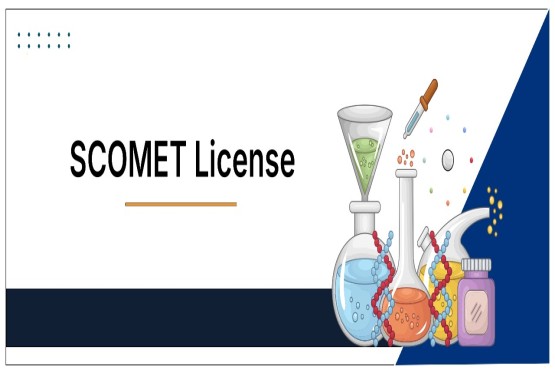The regulation of medical devices in India has evolved drastically over the past two decades. Prior to 2006, the Indian medical device industry operated in a largely unregulated environment. This led to the circulation of substandard and untested devices, posing serious health risks to patients. Recognizing the dangers, the Central Drugs Standard Control Organization (CDSCO) took steps to regulate the medical device sector. One of the key advancements was the implementation of CDSCO Registration for Urology Medical Devices, ensuring that these critical instruments meet strict safety and quality standards before being manufactured, imported, or sold in India.
CDSCO and Medical Device Regulation in India
The Central Drugs Standard Control Organization (CDSCO) is the national regulatory authority under the Ministry of Health and Family Welfare. It oversees the regulation, approval, and licensing of drugs and medical devices in India. The regulatory framework for medical devices was formalized under the Medical Devices Rules, 2017. These rules brought a wide range of medical devices under a risk-based regulatory structure, aligning Indian compliance standards with global norms.
Medical devices are categorized into two types:
• Notified Medical Devices
• Non-Notified Medical Devices
Non-notified devices are not subject to strict regulatory oversight but are encouraged to obtain voluntary registration. In contrast, notified medical devices, such as urology equipment, must undergo mandatory CDSCO registration before being placed in the Indian market.
CDSCO Notification and Inclusion of Urology Devices
On 3rd September 2020, CDSCO issued a significant notification listing 24 categories of medical devices that would now be treated as drugs under Section 3(b)(iv) of the Drugs and Cosmetics Act, 1940. Among these, urology medical devices were formally included, making CDSCO Registration for Urology Medical Devices a legal requirement.
Here is the list of 24 categories of medical devices notified by CDSCO:
List of Notified Medical Device Categories (as per 3rd Sept 2020 Notification)
1. Anaesthesiology
2. Pain Management
3. Cardiovascular
4. Dental
5. Ear, Nose, Throat (ENT)
6. Gastroenterological
7. Urological
8. General Hospital
9. Operation Theater
10. Respiratory
11. Neurological
12. Personal Use
13. Obstetrical and Gynaecological
14. Ophthalmic
15. Rehabilitation
16. Physical Support
17. Interventional and Radiology
18. Rheumatology
19. Dermatology and Plastic Surgery
20. Paediatric and Neonatology
21. Oncology
22. Radiotherapy
23. Nephrology and Renal Care
24. Software
These categories were brought under the regulatory framework to protect public health and ensure product quality.
CDSCO for Urology Medical Devices: Classification and Risk Categories
On 23rd August 2021, CDSCO published an official classification for Urology Medical Devices under the Medical Device Rules, 2017. Devices were assigned a risk classification based on their intended use and associated health risks. This classification is essential for determining the level of regulatory control required.
CDSCO classifies medical devices into four classes:
• Class A (Low Risk)
• Class B (Low-Moderate Risk)
• Class C (Moderate-High Risk)
• Class D (High Risk)
Classification of Urology Medical Devices (with Risk Class)
| Sr. No. | Device Name | Risk Class |
| 1 | Bare-metal urethral stent, short-term | Class C |
| 2 | Biliary/urinary stone retrieval basket | Class B |
| 3 | Bladder neck spreader | Class A |
| 4 | Cystometer | Class B |
| 5 | Electrohydraulic lithotripsy system | Class B |
| 6 | Flexible fibreoptic cystoscope | Class B |
| 7 | Flexible video ureteroscope, reusable | Class B |
| 8 | Hydraulic male urinary incontinence treatment system | Class C |
| 9 | Laser lithotripsy system | Class C |
| 10 | Urodynamic measurement system | Class B |
There are 88 classified urology devices under CDSCO guidelines. Devices that pose higher risks (e.g., those implanted in the body or supporting life functions) are subject to more rigorous scrutiny during the registration process.
Intended Use of Urology Devices
Each urology medical device has a clearly defined intended use, which is critical in determining its risk classification and regulatory requirements. For example:
• A bare-metal urethral stent is used to ensure urine flow in cases of urinary obstruction and is considered moderate to high risk (Class C).
• A cystometer measures bladder pressure and is used for diagnostic purposes (Class B).
• A wearable urine collection bag may be used by patients with urinary incontinence and is categorized as low-risk (Class A).
Latest Update on Urology Device Classification
On 6th January 2025, the CDSCO issued an update under notification number MED-16014(12)/1/2024-eOffice, reviewing the classification of several medical device categories. However, no changes were made to the classification of CDSCO for Urology Medical Devices, meaning manufacturers should continue to follow the same classification as listed in the 2021 notification.
Documents Required for CDSCO Registration for Urology Medical Devices
To initiate the registration process, the applicant must submit a set of documents to the licensing authority. These documents are essential to verify compliance with safety, quality, and performance standards.
List of Required Documents:
1. Application Form (Form MD-14 / MD-15 depending on manufacturer/importer)
2. ISO 13485 Certificate (Quality Management System compliance)
3. Declaration of Conformity
4. Free Sale Certificate (for imported devices)
5. Undertaking confirming that all information provided is authentic
6. TR6 Challan (for fee payment)
7. Device Master File (DMF)
8. Power of Attorney (in case of foreign manufacturers)
9. Full Quality Assurance Certificate
10. Plant Master File (PMF)
11. Schedule D(I) or IVD-related format, if applicable
12. CE Design Certificate or equivalent international certification (if applicable)
These documents must be compiled meticulously to avoid delays or rejections during the evaluation process.
Procedure for CDSCO Registration for Urology Medical Devices
The CDSCO registration process involves multiple steps. It is important to follow the procedure carefully to ensure timely approval.
Step-by-Step Process:
1. Determine Device Category and Risk Class
First, verify whether the urology device is listed as a notified device and identify its corresponding risk classification (A, B, C, or D).
2. Appoint an Indian Authorized Agent (IAA)
Foreign manufacturers must appoint an Indian Authorized Agent who will act on their behalf and communicate with CDSCO. Indian manufacturers may proceed directly.
3. Prepare and Submit Application
Complete the application form and gather all required documents. The application must be submitted to the Central Licensing Authority or State Licensing Authority, depending on the risk class.
4. Evaluation of Application
CDSCO authorities will review the documentation for completeness and accuracy. If any clarification or additional documents are needed, the applicant is notified.
5. Inspection and Audit (if applicable)
For Class C and D devices, a site audit or inspection of the manufacturing facility may be conducted.
6. Grant of License
Once all compliance checks are satisfied, the CDSCO Registration Certificate is issued, allowing the device to be legally sold in India.
Importance of CDSCO Registration for Urology Medical Devices
The registration process ensures that urology devices meet required performance and safety standards. This regulation is particularly important because these devices are used directly on patients for treatment, diagnosis, or physiological support.
CDSCO registration:
• Protects public health
• Enhances product credibility
• Builds trust with healthcare institutions
• Ensures adherence to global best practices
• Enables smooth import and export processes.
Conclusion
CDSCO for Urology Medical Devices is an important regulatory requirement in India to ensure that devices used in urological treatments and diagnoses are safe and effective. With over 88 different types of urology devices classified under the Medical Devices Rules, 2017, it is important for manufacturers and importers to comply with CDSCO guidelines before launching their products in the Indian market. Following the correct registration process, preparing the required documents, and knowing the risk-based classification system is good for obtaining CDSCO approval. As India moves towards more strong medical device regulations, staying updated and compliant is essential for all stakeholders involved in the urology medical device sector.
If you need any support in obtaining CDSCO Registration Certificate, then you can connect with the experts through mail info@ccoffice.in or Call/Whatsapp at +91 9988424211.
FAQs
Q1. What is CDSCO Registration for Urology Medical Devices?
Ans. CDSCO Registration for Urology Medical Devices is the mandatory regulatory approval required to manufacture, import, or sell urology-related medical devices in India. Issued by the Central Drugs Standard Control Organization (CDSCO), this registration ensures that such devices meet quality, safety, and performance standards as per the Medical Devices Rules, 2017.
Q2. Which urology medical devices require CDSCO registration in India?
Ans. As per CDSCO’s classification notification, 88 different urology medical devices require registration. These include devices like urethral stents, cystometers, nephroscopes, ureteroscopes, lithotripsy systems, penile prostheses, and wearable urinals, among others. All notified urology devices listed under Class A to D must obtain CDSCO approval before being sold or distributed in India.
Q3. Is CDSCO registration required for imported urology medical devices?
Ans. Yes. All imported urology medical devices falling under the notified category must obtain CDSCO registration before being marketed in India. In such cases, a foreign manufacturer must appoint an Indian Authorized Agent (IAA) to act on their behalf and carry out the registration process.
Q4. What are the risk classifications for urology medical devices under CDSCO?
Ans. Urology medical devices are categorized based on the potential risk they pose to patients:
• Class A: Low risk (e.g., wearable urine bags, urinals)
• Class B: Low to moderate risk (e.g., cystometers, endoscopes)
• Class C: Moderate to high risk (e.g., urethral stents, laser lithotripsy systems)
• Class D: High risk (Note: Most urology devices fall under Class B or C)
Q5. What documents are required for CDSCO Registration for Urology Medical Devices?
Ans. The key documents include:
• Application Form (Form MD-14 or MD-15)
• ISO 13485 Certificate
• Device Master File (DMF)
• Plant Master File (PMF)
• Free Sale Certificate (for imports)
• CE Certificate (if applicable)
• Declaration of Conformity
• TR6 Challan (fee payment)
• Power of Attorney (for foreign manufacturers)
• Undertaking of authenticity
Q6. What is the validity period of CDSCO registration for medical devices?
Ans. Once granted, the CDSCO registration license for medical devices is generally valid for five years from the date of issue, unless cancelled or suspended earlier. Renewal must be applied before expiry to maintain market continuity.
Q7. What is the procedure to apply for CDSCO Registration for Urology Medical Devices?
Ans. The procedure includes:
1. Identifying whether the device is notified and its risk class.
2. Appointing an Indian Authorized Agent (for foreign applicants).
3. Preparing all necessary documents and filling the appropriate application form.
4. Submitting the documents to the CDSCO or respective licensing authority.
5. Undergoing technical review, and possibly a site inspection.
6. Receiving the registration license upon successful evaluation.
Q8. What happens if a urology medical device is sold in India without CDSCO registration?
Ans. Selling or distributing unregistered notified medical devices in India is illegal and can result in legal penalties, including product seizure, cancellation of licenses, and criminal prosecution under the Drugs and Cosmetics Act, 1940. Compliance with CDSCO guidelines is mandatory to ensure both legal operation and patient safety.












































































_crop10_thumb.jpg)







_Rules,_2025_learn_crop10_thumb.jpg)























































































_crop10_thumb.jpg)








 in BIS FMCS_learn_crop10_thumb.jpg)










_crop10_thumb.jpg)





